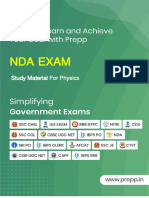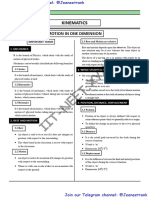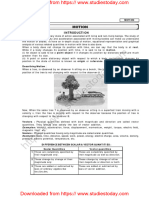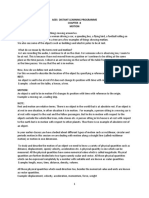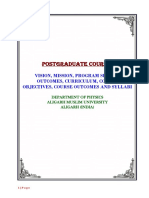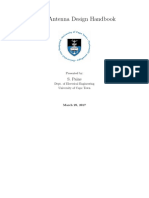0% found this document useful (0 votes)
26 views7 pagesChapter 8 English Notes
The document provides an overview of motion, defining it as the change in position of an object over time, and categorizing it into types such as translatory, rotatory, and vibrational motion. It explains key concepts like distance vs. displacement, uniform vs. non-uniform motion, speed, velocity, and acceleration, along with their definitions and units. Additionally, it touches on the derivation of equations of motion and uniform circular motion.
Uploaded by
amulkumar9666Copyright
© © All Rights Reserved
We take content rights seriously. If you suspect this is your content, claim it here.
Available Formats
Download as DOCX, PDF, TXT or read online on Scribd
0% found this document useful (0 votes)
26 views7 pagesChapter 8 English Notes
The document provides an overview of motion, defining it as the change in position of an object over time, and categorizing it into types such as translatory, rotatory, and vibrational motion. It explains key concepts like distance vs. displacement, uniform vs. non-uniform motion, speed, velocity, and acceleration, along with their definitions and units. Additionally, it touches on the derivation of equations of motion and uniform circular motion.
Uploaded by
amulkumar9666Copyright
© © All Rights Reserved
We take content rights seriously. If you suspect this is your content, claim it here.
Available Formats
Download as DOCX, PDF, TXT or read online on Scribd
/ 7





















